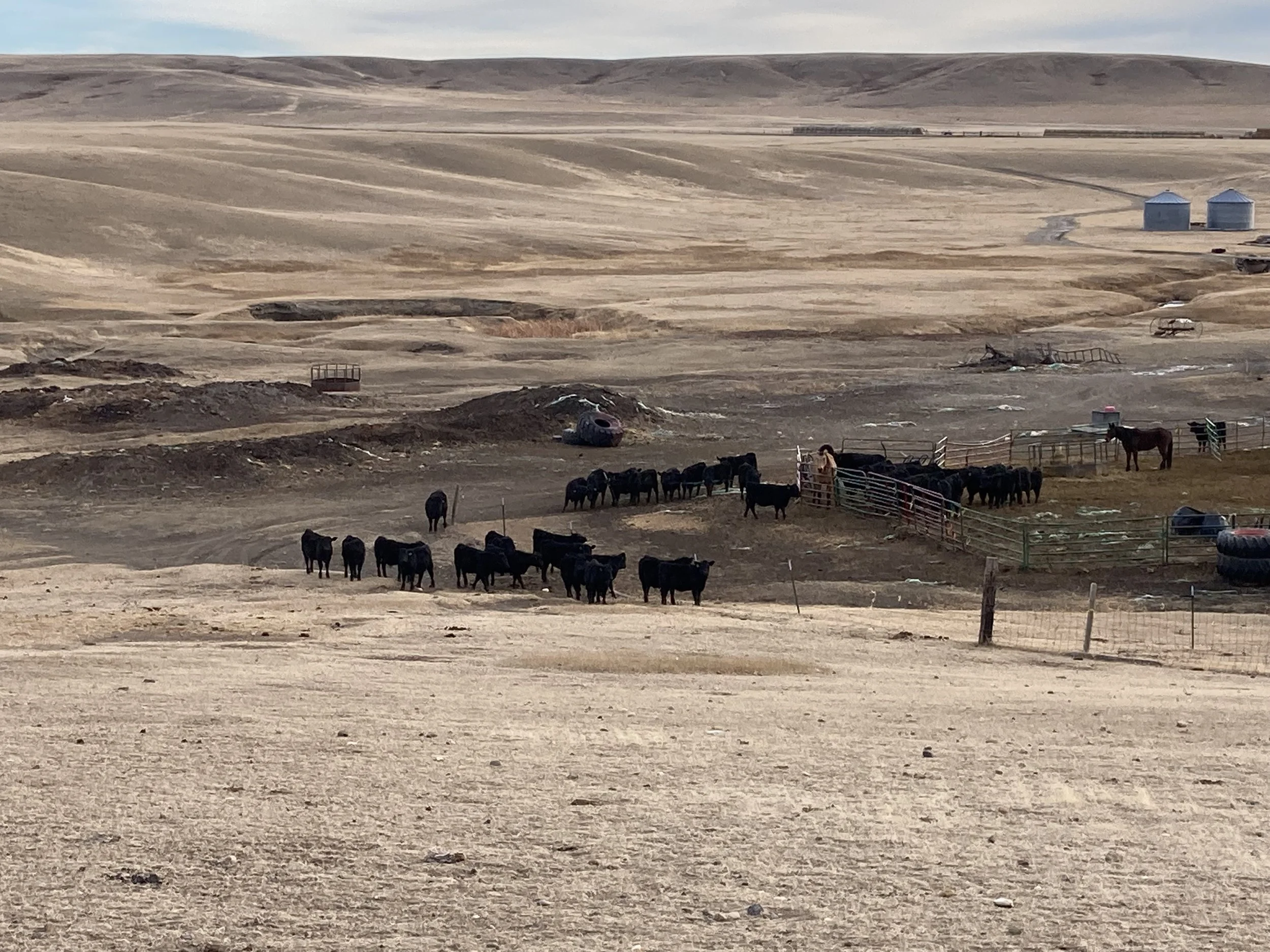Turning Out the Calves
I turned the calves out of the corral last week.
For the past 45 days, I had been helping them climb the ladder from childhood to teenager.
In mid-October, they didn’t know they could survive on hay, didn’t know they could fend for themselves without their mamas’ milk.
As I brought big round bales to the corral, they dodged away, scattering to the fenceline.
I moved slowly and hoped the corral fence held up against their pressure.
After a few days of feeding, the calves began to understand the routine.
They bunched together and waited.
I could walk slowly and quietly among them without seeing panic in their eyes, teaching them to take a bit of responsibility for themselves, but still carrying the load of providing food at their table.
Their mothers, left in the pasture to graze, fell into two groups, similar to the groups I see at junior high school concerts.
Some of the mothers searched longingly for what they missed, the days of comfortable pairing with their elementary dependent by their side.
Others hopped and skipped, practically dancing with elation at the release from responsibility.
Last week, the calves were ready for their next step up the maturity ladder.
They needed to learn to go to the grass and hay, not wait for the hay to come to them.
But they didn’t want to leave the comfort of the corral.
I had to step toward one and then the next so the first had friendly support, then wait while the first lowered his head at the empty space of the open gate.
He took a hesitant step toward the way out, unsure whether an invisible barrier would stop him.
He looked back toward the others for support.
The second calf moved with him, but the rest bunched back.
A few moments later, the first calf lunged through the open gate, kicked up his heels in delight and circled back to see who followed.
The entire bunch jammed through the gate, kicking and twisting in the air, thrilled with their newfound, seemingly-infinite world.
The calves trotted away from the corral, stopped, looked back at me closing the gate behind them and stood there, confused and uncertain, yet with expressions of false bravado.
I giggled silently at the performance in front of me.
Human society mimics this with each change that comes its way.
I knew they were used to hearing the diesel engine bring food to them so I jumped on the tractor, grabbed a round bale and putt-putted past them, hoping they would learn to follow me toward the cow herd.
Some did. Some just stood near the corral.
I rolled out the bale bait in sight of the hesitant calves.
After all, immediate gratification is always good.
I pushed the hesitant calves toward the hay, but not all the way.
I wanted them to learn to seek food and, eventually, join the cows.
Just like teenagers – and many adults – some calves took a few days to catch on to the new routine.
The second day turned into a wreck when my tractor loader broke before I could roll out a bale.
It would be an easy fix, but I needed to drive the tractor to the shop, near a haystack, to fix it.
Many of the calves followed.
While I diagnosed the problem, the calves found a hole in the fence.
My daughter, Abby, helped me guide them out of the haystack.
Then the calves sought adventure in the opposite direction.
Eventually, the tractor loader was fixed and the calves joined the cows, learning the bovine version of independence, just like teenagers standing on the next rung.
